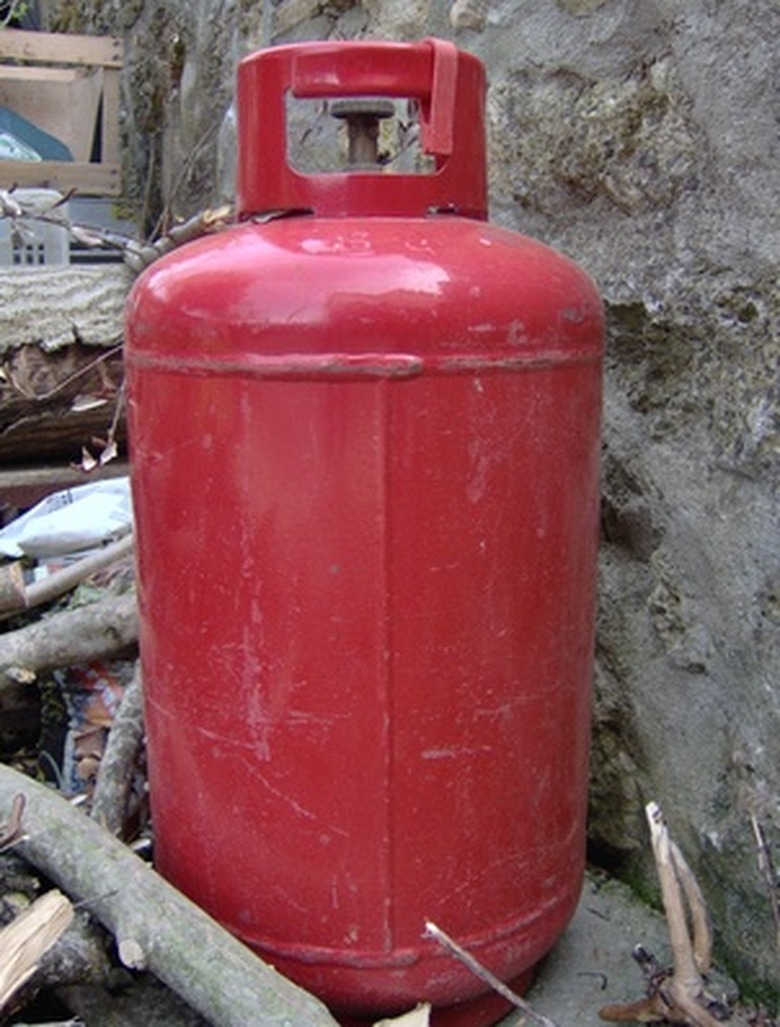Why Is The Spillage Of Liquid Oxygen Upon Asphalt Pavement Potentially Hazardous?
The oxygen we breathe is a gas found in air. However, oxygen can be distilled from air and cooled into a liquid form. Liquid oxygen is useful for propulsion; it is used to launch space rockets. It is also used in some explosives, although this use is less common because liquid oxygen is a volatile substance. If it comes into contact with organic material such as asphalt, it can easily catch on fire and explode.
What is Liquid Oxygen?
What is Liquid Oxygen?
Liquid oxygen is oxygen that has been distilled from air and exposed to extremely cold temperatures. According to Harvard University, it has a boiling point of minus 183 degrees Celsius. It is usually stored in large tanks that are kept well insulated from heat in order to keep the oxygen from evaporating.
The primary use of liquid oxygen is in rocket propulsion systems; however, many hospitals and other health care facilities store oxygen in liquid form and convert it to gas as needed.
Volatility
Volatility
Liquid oxygen is an extremely concentrated substance. While it is not flammable, it accelerates combustion. Its volatility requires it to be mixed with ozone or other gases to stabilize it before it can be used for propulsion.
Liquid oxygen is especially dangerous when it comes in contact with organic substances. The chances of an explosion are high if liquid oxygen spills on asphalt.
Liquid Oxygen and Oil
Liquid Oxygen and Oil
Liquid oxygen will accelerate combustion if it comes in contact with oil or grease. This presents an additional hazard if it is spilled on asphalt; vehicles passing over the asphalt may leak oil or grease and contribute to a fire.
What Happens When Oxygen Spills?
What Happens When Oxygen Spills?
When liquid oxygen spills, it vaporizes into the air, as the atmosphere is far too warm to support it in liquid form. As it vaporizes, it creates a dense cloud of concentrated oxygen. The cloud will infect the clothes of anyone passing through it with concentrated oxygen. It also soaks into organic material such as asphalt.
Both of these problems cause dangerous situations. The oxygen cloud accelerates combustion, so a person exposed to liquid oxygen could set her clothes on fire by smoking a cigarette immediately after exposure. If a vehicle drives over asphalt that has been impregnated by liquid oxygen, the impact of the tires on the oxygen-enriched asphalt causes a massive explosion.
What to Do In the Event of a Spill
What to Do In the Event of a Spill
If you are exposed to liquid oxygen during a spill, go to an open area to ventilate your clothing. Do not smoke or expose yourself to any source of fire for at least 15 minutes.
If liquid oxygen spills on asphalt, the area should be cordoned off for at least 30 minutes. Do not allow anyone to walk or drive over the area, as this could cause an explosion.
Cite This Article
MLA
Ori, Jack. "Why Is The Spillage Of Liquid Oxygen Upon Asphalt Pavement Potentially Hazardous?" sciencing.com, https://www.sciencing.com/spillage-asphalt-pavement-potentially-hazardous-6509943/. 24 April 2017.
APA
Ori, Jack. (2017, April 24). Why Is The Spillage Of Liquid Oxygen Upon Asphalt Pavement Potentially Hazardous?. sciencing.com. Retrieved from https://www.sciencing.com/spillage-asphalt-pavement-potentially-hazardous-6509943/
Chicago
Ori, Jack. Why Is The Spillage Of Liquid Oxygen Upon Asphalt Pavement Potentially Hazardous? last modified March 24, 2022. https://www.sciencing.com/spillage-asphalt-pavement-potentially-hazardous-6509943/
